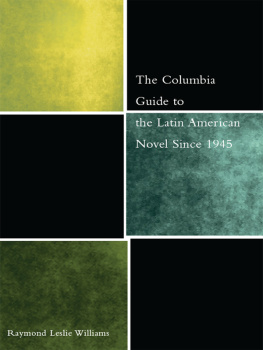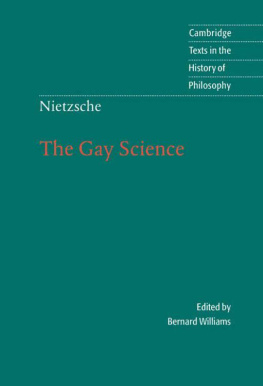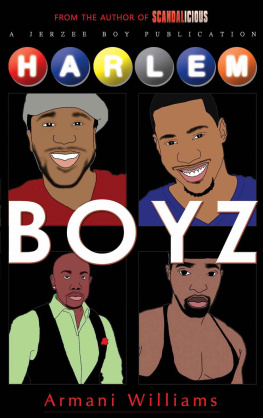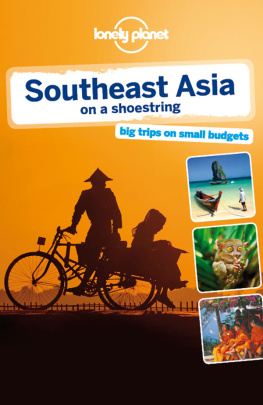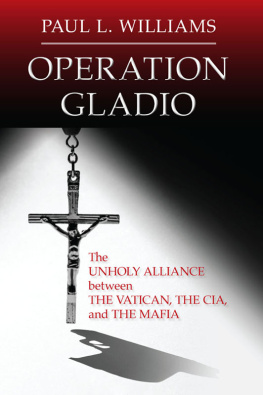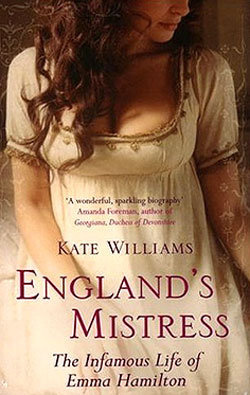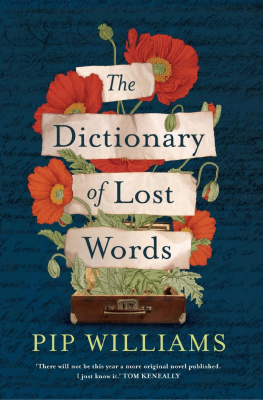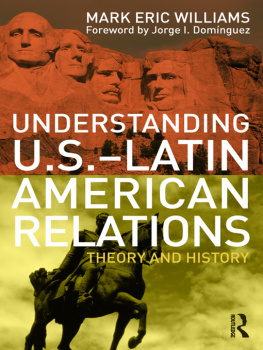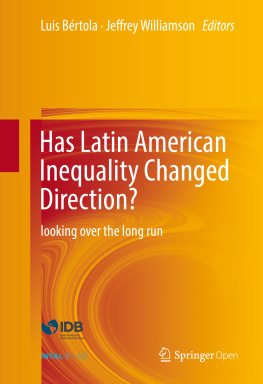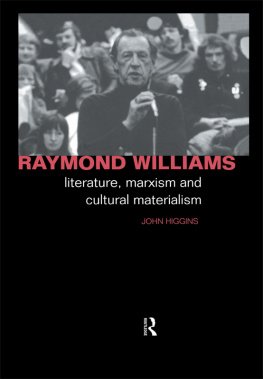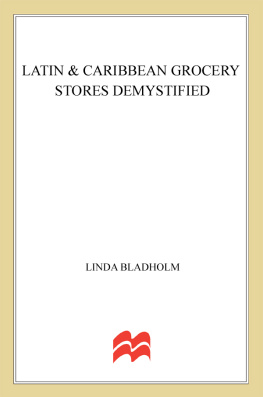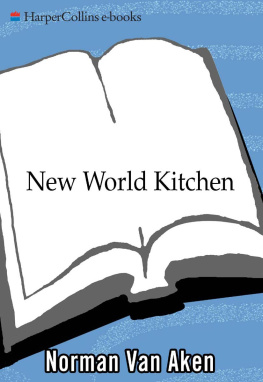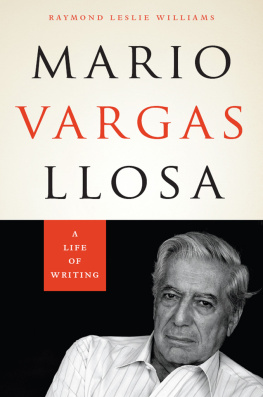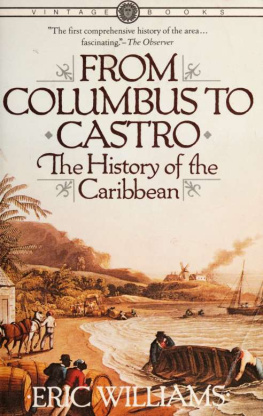The Columbia Guide to the Latin American Novel Since 1945
The Columbia Guides to Literature Since 1945
The Columbia Guides to Literature Since 1945
The Columbia Guide to the Literatures of Eastern Europe Since 1945, ed. Harold B. Segel
The Columbia Guide to American Indian Literatures Since 1945, ed. Eric Cheyfitz
The Columbia Guide to Contemporary African American Fiction, Darryl Dickson-Carr
The Columbia Guide to Asian American Literature Since 1945, Guiyou Huang
The Columbia Guide to East African Literature in English Since 1945, Simon Gikandi and Evan Mwangi
The Columbia Guide to Central African Literature in English Since 1945 , Adrian Roscoe
The Columbia Guide to the Latin American Novel Since 1945
Raymond Leslie Williams
Columbia University Press
New York
Columbia University Press
Publishers Since 1893
New York Chichester, West Sussex
cup.columbia.edu
Copyright 2007 Columbia University Press
All rights reserved
E-ISBN 978-0-231-50169-9
Library of Congress Cataloging-in-Publication Data
Williams, Raymond L.
The Columbia guide to the Latin American novel since 1945 / Raymond Leslie Williams.
p. cm.(The Columbia guide to literature since 1945)
Includes bibliographical references and index.
ISBN 978-0-231-12688-5 (cloth : alk. paper)
1. Latin American fiction20th centuryHistory and criticism. 2. Latin American fiction20th centuryBio-bibliography. I. Title. II. Series.
PQ7082.N7W546 2007
813'.640998dc22
2007008726
A Columbia University Press E-book.
CUP would be pleased to hear about your reading experience with this e-book at .
Contents
This critical study offers many features of a literary history of the modern Latin American and Caribbean novel as well as several features of an encyclopedia. Part 1 is organized along the lines of a four-part history of the Latin American novel from 1945 to 2005. Part 2 is more encyclopedic in approach, with entries appearing under the letters A through Z that succinctly explain the novelistic tradition of specific nations, topics, authors, and the content of selected individual novels. Part 3 consists of an annotated bibliography of studies on the Latin American and Caribbean novel. Most of the novels described, analyzed, or mentioned in this study were written in Spanish, and many of these novels have been translated into English. Some of the novels were originally written in Portuguese (in Brazil), French (in the Caribbean), Dutch (in the Caribbean), and English (in the Caribbean and the United States), and some of these novels have been translated into English and other languages.
I am grateful for the contributions to the research for this work provided by research assistants George Carlsen, Adrian Kane, Lila McDowell, Gabriela Miranda-Recinos, Jos Recinos. I want to thank Susan Pensak of Columbia University Press.
The Colonial Legacy
The diverse peoples, languages, and cultures of the region today called Latin America and the Caribbean share a colonial legacy. Spain and Portugual ruled the region for approximately three centuries and other European nations have exercised a colonial presence. Taking into account its indigenous, African, and Iberian cultural heritages, the Mexican writer Carlos Fuentes has eschewed the very term Latin America and identified this vast region as Indo-Afro-Ibero America. The numerous indigenous languages and cultures (literally hundreds, from Mapuche in Chile to Nahuatl in Mexico), the several African languages and cultures, and the several Western European languages and cultures (principally from Spain and Portugal, but including French, English, and Dutch) make the vast region thatfor lack of a better termwe call Latin America and the Caribbean patently heterogeneous.
The colonial legacies that are important and still live topics of the Latin American and Caribbean novel today are also diverse in themselves. The colonial legacy from Spain has produced the writing of novels in the Spanish language in over twenty nations as well as Puerto Rico and the Unites States. Writing in Spanish, novelists from Mexico to Chile are still assessing the colonial legacy from Spain, some of whom have returned to the medieval roots of their mother language. The colonial legacy from Portugal is still being written about in the Portuguese language in Brazil, both in historic research and historical novels. Frances colonial legacy is extant in the three departments they still govern in the Caribbean (Guadeloupe, Martinique, and French Guyana) and where novelists such as Maryse Cond write Caribbbean novels in French about their African and colonial identities, among other topics related to the colonial past. The colonial legacies of Great Britain and Holland are also the focus of fiction being written in English and Dutch in nations such as Jamaica and Suriname, among other parts of the Caribbean, often called the West Indies, where English and Dutch are spoken and written. Novelists such as Erna Brodber, who writes in English in Jamaica, and Astrid Roemer, who writes in Dutch in Suriname, are testimony to this part of the European legacy of colonialism.
Writers such as Carlos Fuentes in Mexico and Diamela Eltit in Chile, as well as many of their cohorts, have addressed a variety of issues related to these colonial legacies, some of which have been addressed in subtle and complex novels. In the broadest of terms, however, Latin American and Caribbean writers have addressed the colonial legacy in three general areas: in novels about the wars of independence (mostly dealing with nineteenth-century Enlightenment thought as well as the early nineteenth-century political conflicts themselves), in novels about about the Mexican Revolution (19101917), and in novels about the Cuban Revolution of 1959.
The literature about the independence period is vast, for numerous contemporary novelists have felt the need to reassess that key period of nation building in Latin America and the Caribbean. Thus, novelists such as Colombias Gabriel Garca Mrquez, who wrote the novel El general en su laberinto (1989, The General in His Labyrinth) on a prominent political figure of the independence, Simn Bolvar, were interested in rewriting the history of the foundation of the Latin American nations. Numerous historical novels about the nineteenth century have been writtenreassessments of the empirical history, of Enlightenment thought, and of nineteenth-century foundational fictions that had proposed other versions of the periods history. These novels question, for example, whether or not the political independence of these nations represented an authentic cultural and economic independence. They also question the values of the old aristocracies that tended to remain in power after the political independence from Spain, Portugal, and the other European powers with interests in Latin America. The Argentine Ricardo Piglias novel Respiracin artificial (1979, Artificial Respiration) returns to the roots of Argentine nationhood in the nineteenth century, as he reviews in depth the nations cultural and political history.
The literature about the Mexican Revolution is as vast as the literature of independence and the foundational fictions of the nineteenth century. The Mexican Revolution was a broad-based rebellion against not only the authoritarian regime of Porfirio Daz but also a reaction against the old elitethe same families that had ruled Mexico since the colonial period. From Mariano Azuelas classic novel of the Mexican Revolution,

